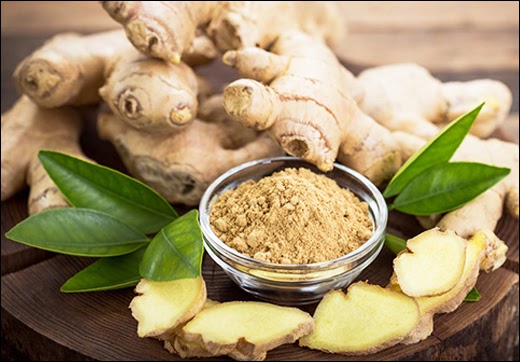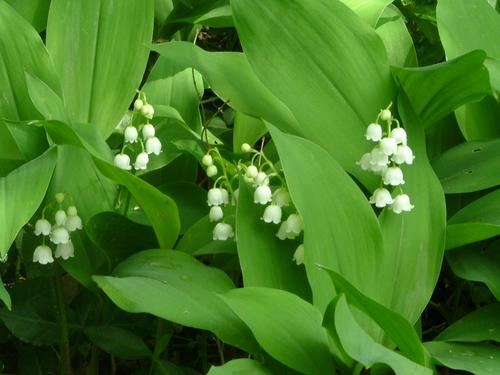Abstract
One of the oldest spices, with a distinctive invigorating aroma and juicy flavor. India has the highest production of ginger. According to data for 2022, Madhya Pradesh, India, is the largest producer of ginger. Following this, the important growing states are Karnataka, Assam, and Himachal Pradesh. Other ginger-producing countries include Brazil, China, Japan, and the West Indies. Because of its main bioactive compound, GINGEROL, it has numerous taste-enhancing properties. And this is the primary seasoning ingredient for spice material in a typical daily diet. Ginger has traditionally been used as a medicine. Ginger paste, also known as liquid ginger, is commonly used to flavour foods. Cold drinks, soft drinks, alcohol, and some Ayurvedic syrups are also examples of beverages that contain it. Fresh and dried ginger have different applications. Fresh ginger can be used to make tea or “Kadhas” during the winter. Some housewives prepare or preserve raw ginger as ground powder for future use. It is known as “Sonth powder” in Hindi. This also functions as a medicinal spice.
Introduction
Ginger is from the Zingiberaceae family, which originated in Southeast Asia. This is one of the most important spices in India. This is obtained from underground stems known as rhizomes. It has a stem that is approximately 12 inches long, narrow, and ribbed, with green leaves and yellowish green flowers. Ginger varieties vary in size, fiber, rhizome moisture content, and yield. Ginger thrives in a warm, humid climate. It needs moderate rainfall from spreading to germination.
Taste Of Ginger
Its powerful, exotic roots enhance the flavour of the fruit. It has a mildly spicy or peppery flavour and a refreshing aroma. Ginger tastes spicy because of the chemical constituents present- gingerol. This is a specific compound that creates a hot sensation. If we talk about the young ginger, it is very juicy and has a melodious kind of flavour. It is said that the growing conditions of ginger can also affect the odour, taste, and flavour; sometimes it is more bitter than others.
Nutritive Content Of Ginger
Ginger is basically known for being the best antioxidant. It generally does not have any protein or crude fibre content. Vitamin C and Beta- carotene are the main sources. At a certain percentage, it consist of carbohydrates, ashes, crude protein and crude fibre content, In dried ginger , a slightly higher moisture content was found
Minerals
Zinc, manganese, iron, Cu, Ca, and phosphorus are present in good amounts, as some researchers have researched.
Bioactive Constituents
Ginger is composed of a huge amount of active compounds, such as phenolics – major Gimgerols, shogaols, and parasols. terpene compounds include Zingiberene, bisbolene, farnesene, and curcumene.
Components Including Fresh And Dried Ginger Is Shown In The Table Given Below
Fresh Ginger
Dried Ginger
Gingerols are highly active in fresh ginger
With heat and dry treatment for lomg time storage, gingerols can be transformed into shagaols
Polyphenols present are- 6- gingerol, 8- gingerol and 10- gingerol
And is responsible for the taste and flavour of dried ginger
There are so many benefits to eating fresh ginger:
Fight with germs, which support our immune system
Good breathing also keeps mouth healthy
Ease the pain of periods and arthritis
It also lowers blood glucose levels
Dried ginger is taken in liquid form mostly as Kadhas, and it can also be taken in powdered form as Churans due to its antioxidant and healing nature. This helps in;
Digestion
A healthy respiratory system (cold and cough)
Joint health
Properties Of Ginger
Ginger is used as a good antioxidant. Due to its bioactive properties, this helps in the removal of toxins from the body through secretions. It stimulates blood circulation and cleanses the colon from diseases like bowel syndrome and some kidney disorders. Ginger is safe to eat daily at a certain quantity of around 3-5 grams.
1. Common Cold & Cough
The rhinovirus, commonly called the common cold, is a disease that is common in society. Although many people suffer from the common cold,. It keeps our body inactive and slows down the activities of our nervous and respiratory functions. Ginger is served as an active ingredient here. It can be consumed in the form of tea, kadha, or honey and lemon during these conditions. This is the cheapest way to cure the disease at home, rather than consult with a doctor. But if your cold is extending from weeks to months, one must discuss this with the doctor. It helps in producing antibodies and fighting against antigens. And keep your inner body warm during the winter. Everyone is used to drinking ginger tea in the winter.
2. Antimicrobial & Antibacterial Infections
The essential oil compounds present in ginger help fight against microbes and bacteria as well. This herb helps in inhibiting the growth of a multidrug- resistant strain of Pseudomonas aeruginosa through biofilm formation. This helps in making the cell wall as well as the cytoplasmic membrane, which is more permeable and induces the loss of membrane integrity in fungi.
The essential oil present in ginger shows antifungal properties against Aspergillus flavus and restricts the expression of some dominant genes.
Fresh ginger was found to inhibit plaque formation in the human respiratory system. This was effective in blocking viral attachment and internalisation. This is how ginger has antibacterial and antifungal properties.
3. The best Antioxidant
The higher antioxidant properties of dried and fresh ginger are due to its bioactive compounds, like shogaols, which occur naturally during the drying process. Studies found that this dried ginger is rich in shogaol as compared to fresh ginger. These bioactive molecules help in managing free radicals( compounds that damage cells when their numbers grow too high).
A recent study proved that sun dried ginger is good to consume and has higher levels of antioxidant compounds.
One can use the ginger powder to make pinni during the winter. This pinni is made with “sonth powder” and fine dry fruits, which keep the body warm and prevent cold and Dry ginger can also be consumed with veggies One can make a paste and pour it into the food while making it. Ginger tea, or ginger water, is best used at home. Soak the ginger in water overnight, and in the morning, boil the water. When it cools down, take it with honey on an empty stomach. This can secrete many toxins from the blood and also help in purification. It is a very useful drink after a workout. It can sweat the body and release sweat from the skin.
These are some easy and healthy ways to intake ginger. And serve as good antioxidants.
4. Benefits In Digestion
This spice is a popular home remedy for gastric issues such as constipation, bloating, dyspepsia, gastritis, ulcers, and indigestion. Ginger constituents have been reported to stimulate digestion and nutrient absorption, thereby relieving constipation. Ginger stimulates the activity of digestive enzymes like pancreatic lipase and amylase. Ginger contains terpene compounds such as zingiberene and alpha-curcumene, which have been shown to help with nausea and vomiting, IBS, and fatty liver disease.
Many people dislike eating ginger because of its distinct aroma and pungent odour. This results in an odd and unappealing flavour. Gingerol, a naturally occurring component of ginger root, is beneficial for gastrointestinal disorders. Eating raw ginger improves digestion, reducing the amount of time food spends in your gut and relieving nausea.
This can help with constipation or an upset stomach. For a healthy and clean stomach, eat a slice of ginger before each meal.
5. Immune System Booster
A case study demonstrates that ginger can be beneficial for smokers. Cigarette smoke is known to contain toxic and carcinogenic compounds that affect nearly all systems in the body, increasing the risk of mortality from cardiovascular disease and cancer. Many studies have shown that smokers experience a sudden increase in body cells during inflammation, such as neutrophils, lymphocytes, and others.
There are a lot of herbs. Natural foods, nutrients, and supplements can also help boost the immune system. Thus, ginger, as an aqueous extract, can be consumed naturally and counteracts the negative effects of smoking on the immune system and thyroid hormones.
Ginger consumption on a daily basis boosts the immune system and fights chronic diseases such as colds.
Ayurveda clearly explains ginger’s role as an immune booster. Ginger is known as Aadrak in Sanskrit. Rasayanas are potent Ayurvedic herbs for immunity building that help strengthen and repair all of the body’s dhatus. A long inch of sliced ginger with a pinch of salt (rock) before a meal improves taste and appetite, aids in the elimination of antigens from the body, and activates the immune system.
Conclusion
Adrak/Ginger/Zingiber officinale, a popular spiced herb, can be found in almost every kitchen. This herb has many anti-inflammatory, antimicrobial, and antioxidant properties that protect against disease. Its main bioactive constituents made them effective at inhibiting all foreign substances in the body. Ginger can be consumed in a variety of ways, including tea, syrup, and incorporated into food to enhance its flavor. The ultimate ginger paste is both beneficial and easy to consume. Many people refuse to consume it due to its strong aroma. Aside from these applications, ginger is used in therapeutics and the food industry. Tons of ginger are grown in many places, and the rhizome is consumed because of the presence of gingerol. This has numerous effects on smokers as well. These are the main benefits of ginger. Consuming too much ginger can be fatal. This can lead to bleeding, nausea, and stomach upset. Consume 4 grams of ginger per day accordingly. Or it may not be appropriate for some people; that is an exception. Although it is an epic underground stem fruit with quantifiable anti-disease properties.


